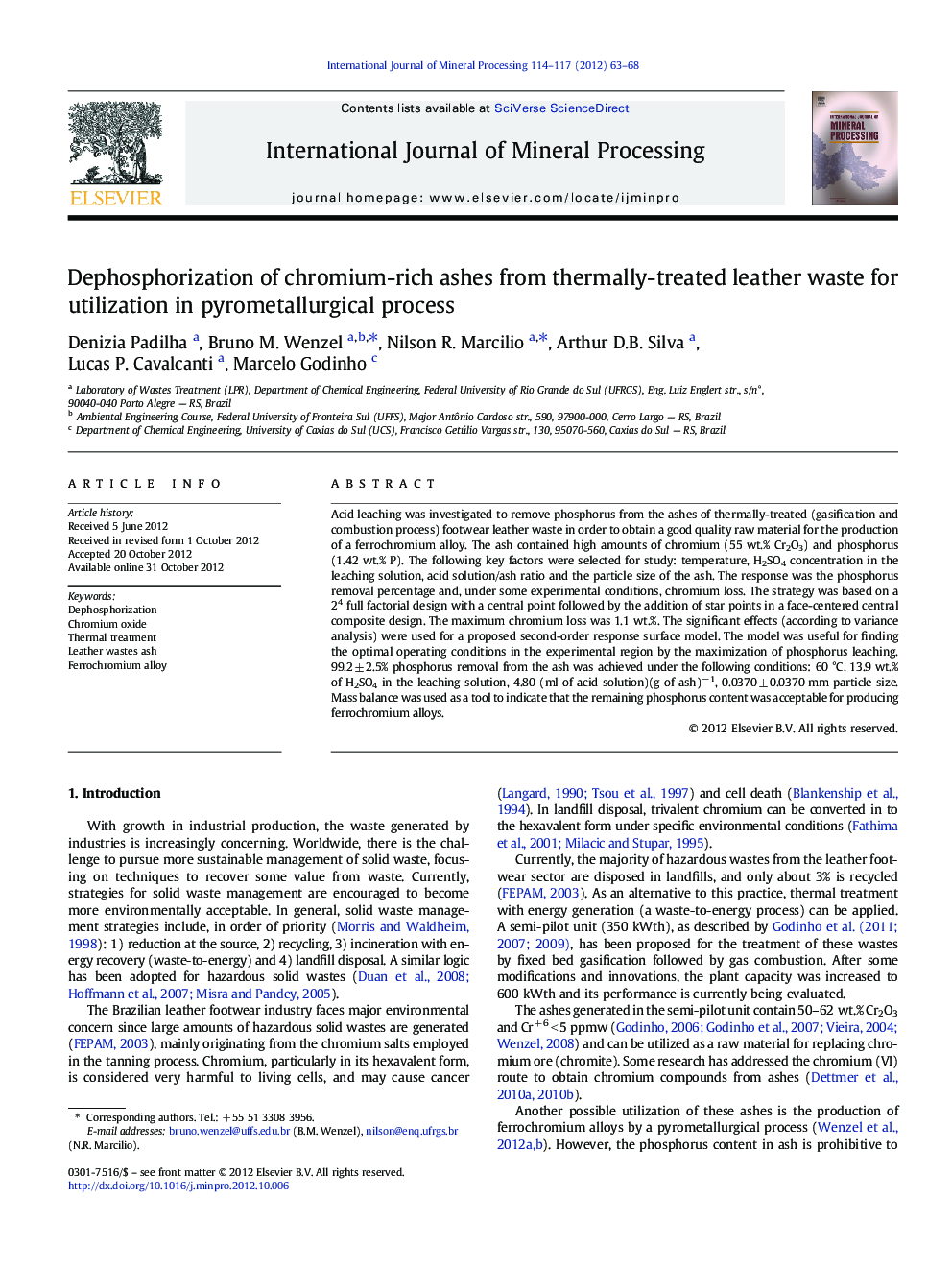| Article ID | Journal | Published Year | Pages | File Type |
|---|---|---|---|---|
| 214128 | International Journal of Mineral Processing | 2012 | 6 Pages |
Acid leaching was investigated to remove phosphorus from the ashes of thermally-treated (gasification and combustion process) footwear leather waste in order to obtain a good quality raw material for the production of a ferrochromium alloy. The ash contained high amounts of chromium (55 wt.% Cr2O3) and phosphorus (1.42 wt.% P). The following key factors were selected for study: temperature, H2SO4 concentration in the leaching solution, acid solution/ash ratio and the particle size of the ash. The response was the phosphorus removal percentage and, under some experimental conditions, chromium loss. The strategy was based on a 24 full factorial design with a central point followed by the addition of star points in a face-centered central composite design. The maximum chromium loss was 1.1 wt.%. The significant effects (according to variance analysis) were used for a proposed second-order response surface model. The model was useful for finding the optimal operating conditions in the experimental region by the maximization of phosphorus leaching. 99.2 ± 2.5% phosphorus removal from the ash was achieved under the following conditions: 60 °C, 13.9 wt.% of H2SO4 in the leaching solution, 4.80 (ml of acid solution)(g of ash)− 1, 0.0370 ± 0.0370 mm particle size. Mass balance was used as a tool to indicate that the remaining phosphorus content was acceptable for producing ferrochromium alloys.
► Ash of thermally treated leather waste as raw-material for pyrometallurgical process. ► Selective phosphorus removal from ash by sulfuric acid leaching. ► Modeling of process by experimental design technique. ► In optimal conditions 99.2 ± 2.5% of phosphorus removal. ► The remaining phosphorus content is acceptable to produce ferrochromium alloys.
